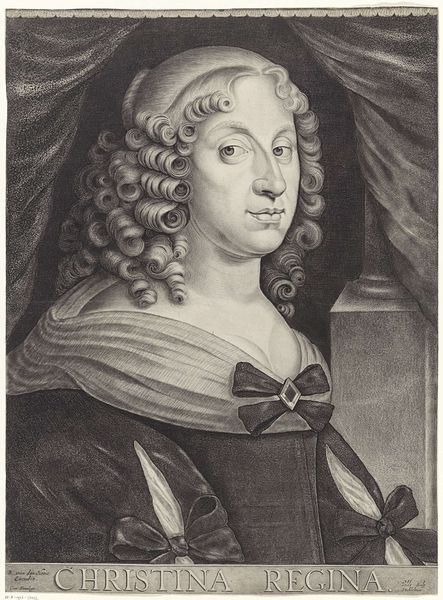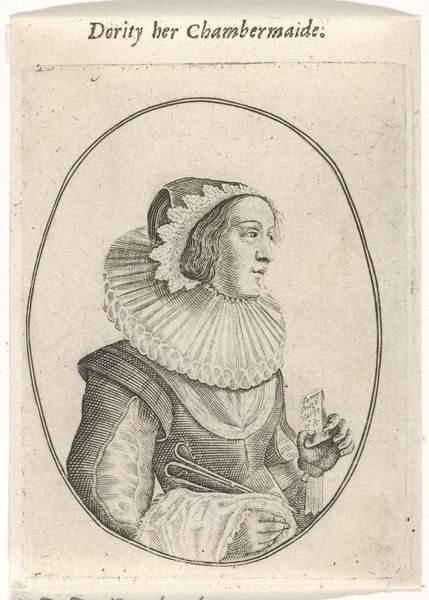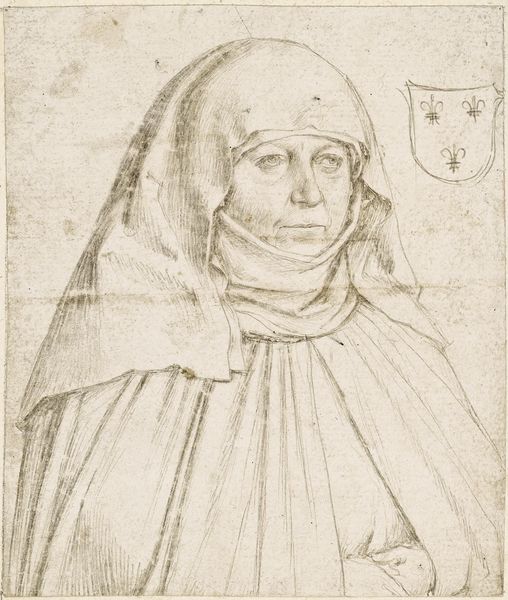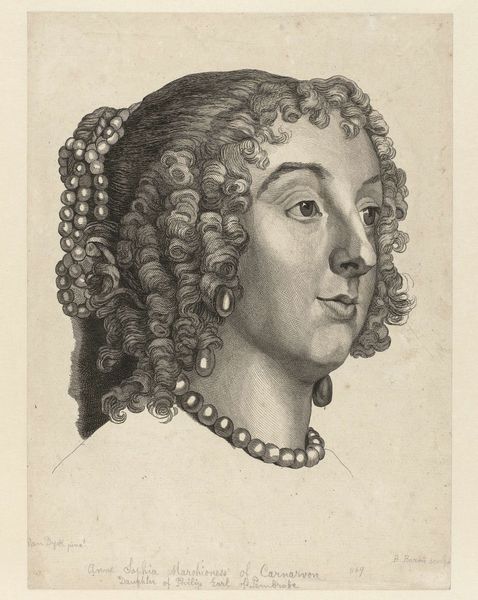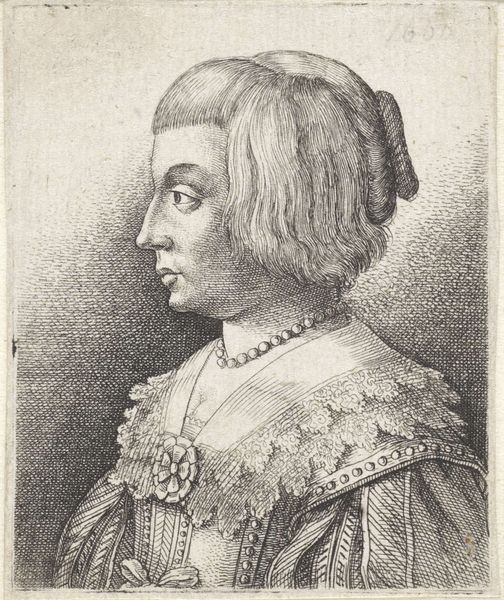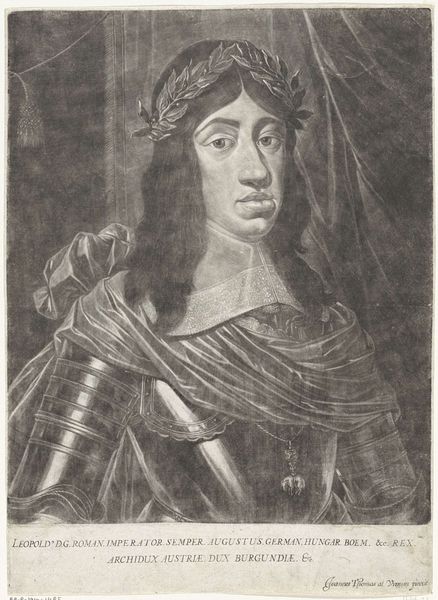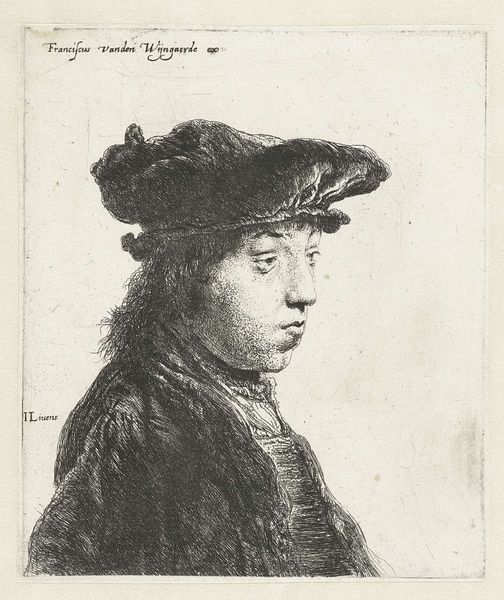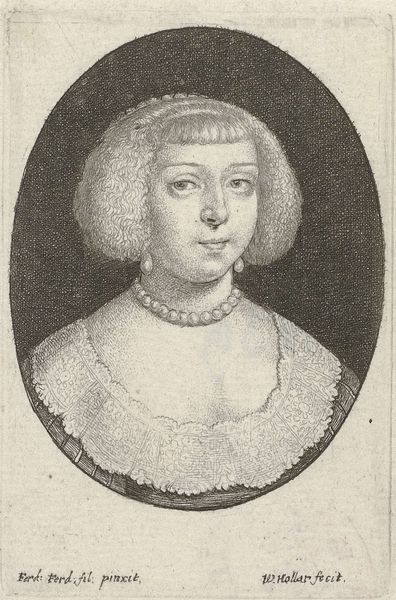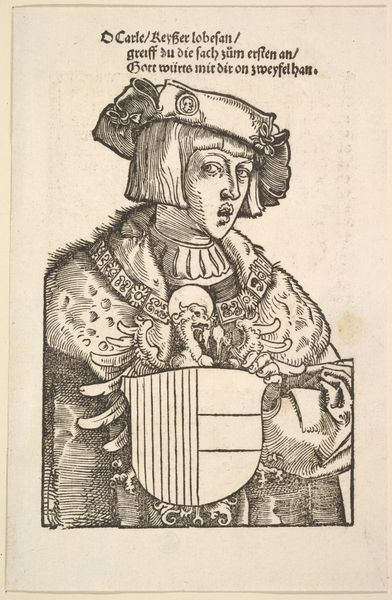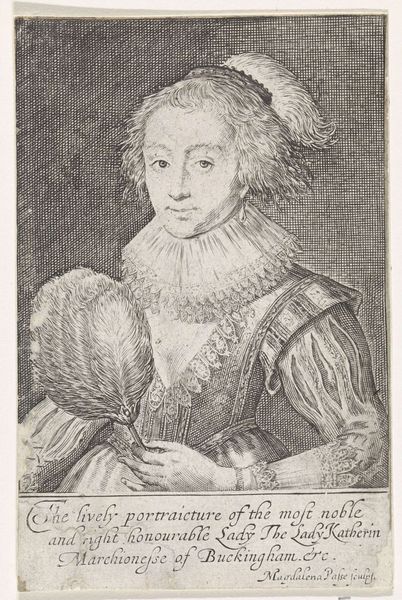
print, etching, engraving
#
portrait
#
baroque
#
dutch-golden-age
# print
#
etching
#
engraving
Dimensions: height 68 mm, width 48 mm
Copyright: Rijks Museum: Open Domain
Wenceslaus Hollar created this small print of a woman with a lace headscarf in 1648, using etching. This is an intaglio process, where the artist protects certain areas of a metal plate with wax, then bathes it in acid. The exposed parts are eaten away, leaving behind recessed lines, which hold ink. Consider how Hollar's choice of material influences the artwork. The fine lines he achieved through etching allowed for incredible detail, especially in rendering the delicate lace. Look at the density of lines used to create tonal variation, and how these marks define the contours of her face. Think about the social context of this image. Lace was a luxury good, requiring countless hours of skilled labor. By depicting his sitter in such finery, Hollar not only showcased her wealth but also acknowledged the intricate craft traditions that sustained it. By understanding both the materials and the making, we can fully appreciate the artistic and cultural significance of this portrait. It's a reminder that even seemingly simple images can reveal complex stories about labor, consumption, and social status.
Comments
No comments
Be the first to comment and join the conversation on the ultimate creative platform.
